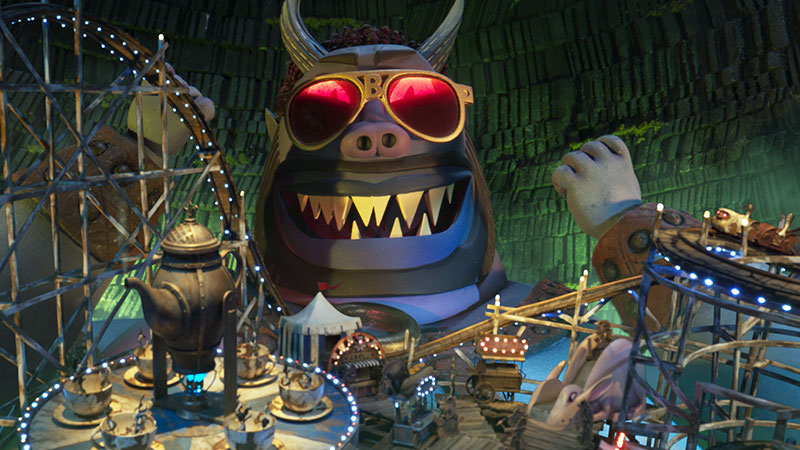BlueBolt VFX Supervisor Henry Badgett talks about his team’s environmental, crowd and FX work on two major battles, bringing drama and realism to Ridley Scott’s recent film ‘Napoleon’.

BlueBolt contributed violent, dramatic battle sequences to Ridley Scott’s Napoleon as it follows the rise and fall of French Emperor Napoleon Bonaparte. VFX Supervisor Henry Badgett led the team, who delivered 126 VFX shots depicting Bonaparte’s 1793 Siege of Toulon and the violent suppression of the Paris Riots two years later.
Henry worked with overall VFX Supervisor Charley Henley to align BlueBolt’s work with the immersive, emotional quality the director was looking for. Ridley Scott’s own hand-drawn storyboards directly influenced BlueBolt’s VFX work for both sequences, along with reference paintings and engravings of the events from the period.
Early Expectations
Henry said, “By the time we were briefed, Charley had gone ahead with most of the storyboard interpretation, but we did still see a handful of them that the in-house team had not yet pre-vis’d. They basically serve as shortcuts to the most basic elements of the image composition, highlighting what Ridley thinks is important.
“As soon as we saw the early cuts of these sequences with the post-vis, we could see how great they were going to be. Charley has an excellent eye and a collaborative attitude that left room for us to do some creative work.”
The Siege of Toulon marked a turning point in Bonaparte’s career that revealed early on his talent for military strategy. At this point in history, various forces, especially the English, were preparing to challenge France’s control of the seas, and without the port of Toulon, the country’s position would be weakened. To recreate Napoleon’s attack by night on the English forces, BlueBolt split 90 shots between the daytime ‘before’ scenes and the dramatic night time battle.
Re-inventing Geography
Their initial challenge was creating authentic, consistent geography for the Toulon Harbour environment. The shoot took place at several locations in Malta, including a set build surrounded by blue screen. BlueBolt’s brief was to unify these separate locations with 3D and digital matte painting work to make them feel like one, single port environment.
“Although we weren’t in Malta for the shoot, we had extensive on-set documentation including LIDAR and photography from our on-set VFX Supervisor Richard Bain,” said Henry. “The shoot location had towering multi-level forts overlooking the coast in a way that the story location of Toulon actually never had to the same extent. Toulon is more of a natural geographical defence with a large sheltered bay. Nevertheless, we went with the more dramatic multi-level version.”
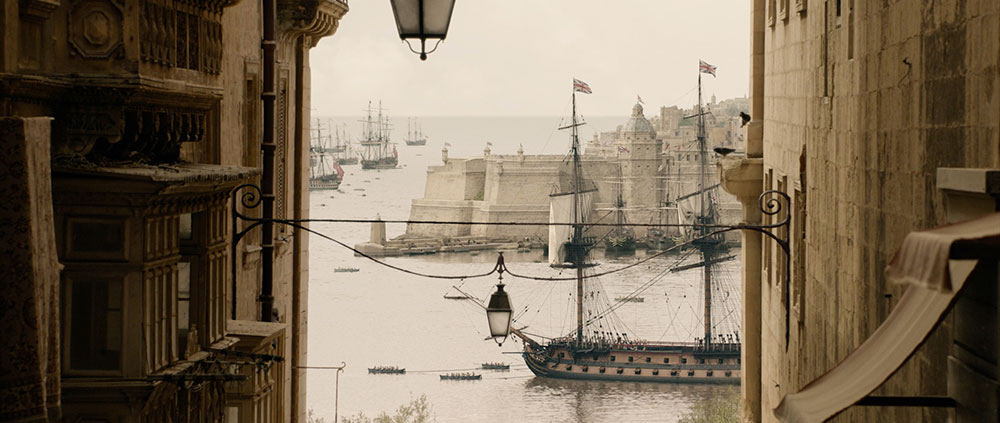
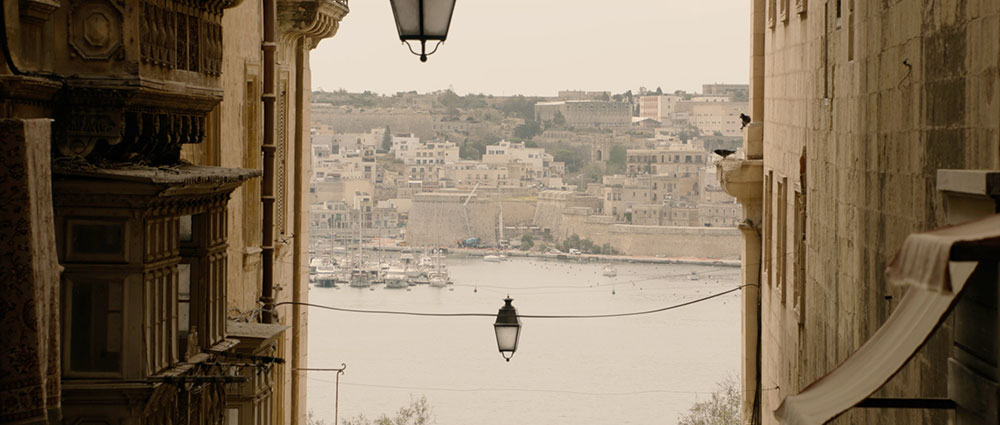
The fort was to occupy three levels – low ground or sea-level, a middle courtyard approach and upper walls – and each level was filmed at a separate location, so by adding the missing locations and the wider harbour environment they could be tied together visually.
Staging
Each filming location was created digitally in a proxy form in matchmove software and the three models were brought into the same scene and positioned for the best line-up that works for the greatest number of shots. Henry said, “Decisions were made over details in the real location or set build to include – or remove – like a window in a tower. Meanwhile, digital matte painting in the deep background is a constant in most of the shots, helping to tie them together.”
Within that environment, the team needed to build the British fleet in the harbour, including CG sailors, plus a fully rigged recreation of the British fleet in the Mediterranean – including HMS Victory – and ultimately to enhance the battle with a range of FX work that climaxes with the explosion of the ammunition-carrying ship ‘Iris’.
Populating the shots needed a variable approach. “We used mostly 2D elements on the land and 3D characters for the ships, which gave us the flexibility to add them wherever we wanted – including a few 3D characters for the shots of soldiers thrown off the walls onto the rocks below,” said Henry.
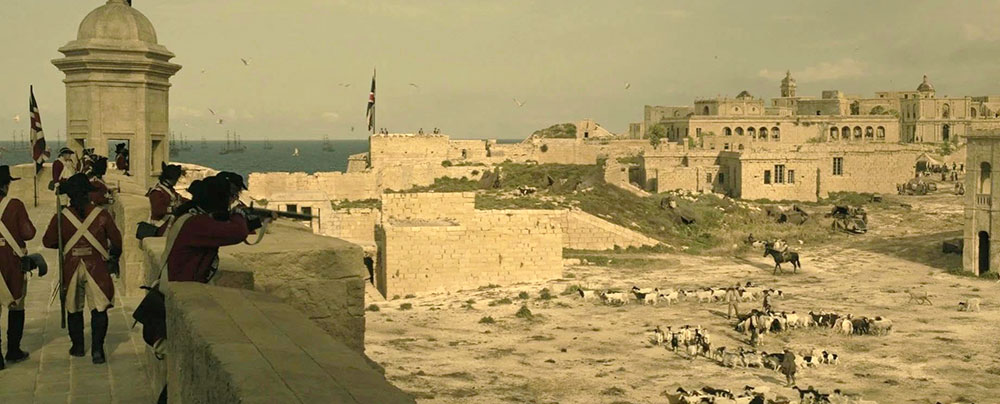
Battle Lights
The lighting aspect of the battle was important to control accurately because the FX explosions and flashes also had to light the scene, much more than if the sequence were happening in daytime. Henry said, “Special FX Supervisor Neil Corbould did some incredible work on set, particularly with the firing cannons – we were impressed on the first watch-through of the rough cut, wondering what was left for us in that respect, but more is always better. Rifle fire sometimes needed extra hot fire from the barrel, and usually the deeper background soldiers didn’t have FX-prepped rifles, so we would add fire and smoke to those using elements that Neil had shot.
“Cannon fire was augmented with burning mortar pieces done in FX – which is a story point – and looked wonderful in the wide shots, like fireworks. The timing and animation of those mortar explosions needed careful execution, and had to include off-screen as well as on-screen explosions to give the battle its drama and immersive feel. It makes the battle feel bigger if it can be extended off-screen with explosions you can’t directly see. It's not hard to do – since it would always be in a shot that also had on-screen explosions, a simple duplication and offset will do the job.

Critical Timing
Coordinating the timing these effects to feel right was mainly a matter of the lighting artists and the FX team communicating closely with each other. “There were a handful of full CG shots, and a few hybrid CG/live action shots where this came into play. But we didn’t relight much of the shot material – we would either match to it or, in a couple of cases, replace ships completely with digital ones that we could light correctly,” Henry said.
Also, instead of dealing with a full sequence of day-for-night shots in a straightforward manner, BlueBolt’s artists were adding a slightly twilight sky to some night shots. He noted, “This is an important part of the look for the sequence, which aims to allow the audience to see things in the distance and not let everything fade into black. A visible, distant skyline adds scale to the shots.”
Expressive Blow-ups
The expressive qualities of interactive lighting, from foreground to background, were especially evident in shots like the one of Bonaparte watching the ships go up in flames with his blood stained face illuminated by the fire. “That shot of the actor is in camera, and we added background atmosphere to place him in the battle at that time,” said Henry.
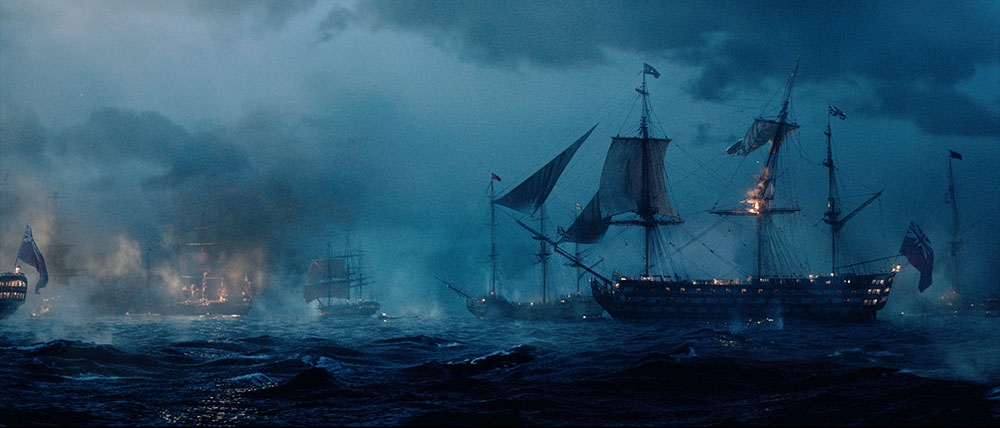
He estimates the Toulon sequence was about 70/30, FX to practical explosions and fire elements. Houdini was used to handle the FX work, of which blowing up the munitions ship ‘Iris’ was especially impressive. According to Henry, setting up a complex series of explosions like this basically needs lot of iterations.
He said, “Starting with building the composition of the image, we were making a single explosion cover the required screen space, and then working it up to look realistic by dividing it into a number of different explosions and layers of smoke that together plausibly filled up that space with the right timing. Even at the later stages of the work, we referred back several times to 19th century paintings of naval warfare. A good example of our reference is the painting 'The Battle of Sinope' by Ivan Aivazovsky.”
Shipbuilding
A secondary but major element of the battle and other scenes at Toulon was the British naval presence, calling for dozens of historically accurate ships.
“The team at BlueBolt brought their experience from numerous past projects involving historic CG ships, building a hero model for each of the six or seven classes of ship and from there making three or four variations of each of those to form the fleet,” said Henry. “With those designs established, we added intricate period rigging, sails and flags with rope and cloth simulations.
“We built HMS Victory in high detail, and three other large ships in less detail, then about three mid-size and three small boats. These were all duplicated with variations when needed until the fleet was about 45 ships. Needless to say, the Haynes Manual on HMS Victory was extremely useful.”
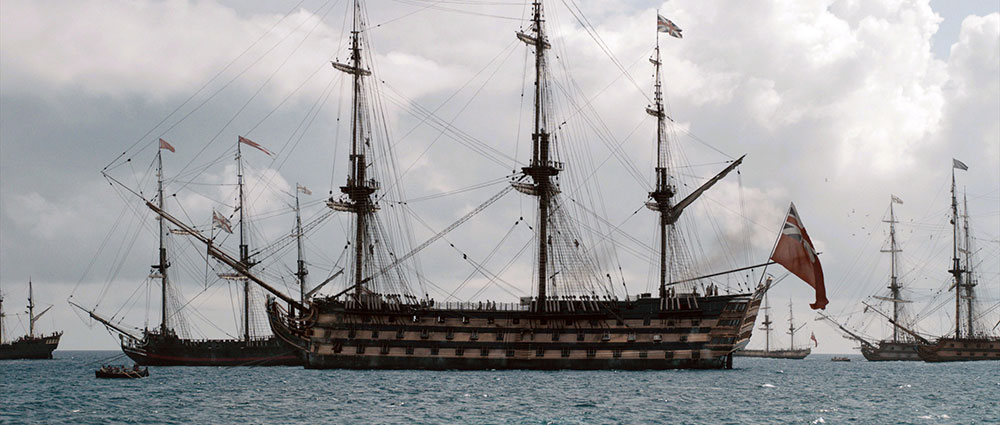
HMS Victory
To help build all of this detail in a way that supported the action that was to follow, they received reference from an intriguing element shoot. Production built 1/16th scale miniatures of the ships. The SFX department then attacked the fleet with cannon balls and set the entire build on fire. Video and images were captured from before and after the attack.
All Hands on Deck
Henry said, “I wish I had been there for the shoot – it looked pretty exciting! In terms of reference, it helps to get all the cooks in the same kitchen to figure out how something like a sail catching fire should look. Of course, scale does make a difference and we needed to take it one step further to create destruction with the same level of impact. But in the absence of a full scale burning ship, it still helped. We also looked at footage of burning wooden buildings to get an idea of how scale enhances the behaviour of the fire.
“It was useful to have worked on similar ships before. For a few of the non-hero ships, the team only needed to make small adjustments to how they had previously built them. More to the point, our artists really know what they are doing with rigging and sails. They had the sails of the large ships all fully rigged (in the VFX sense) and ready to simulate wind and impacts, and in the shots where splinters are flying off and masts falling, they handled these effects individually.
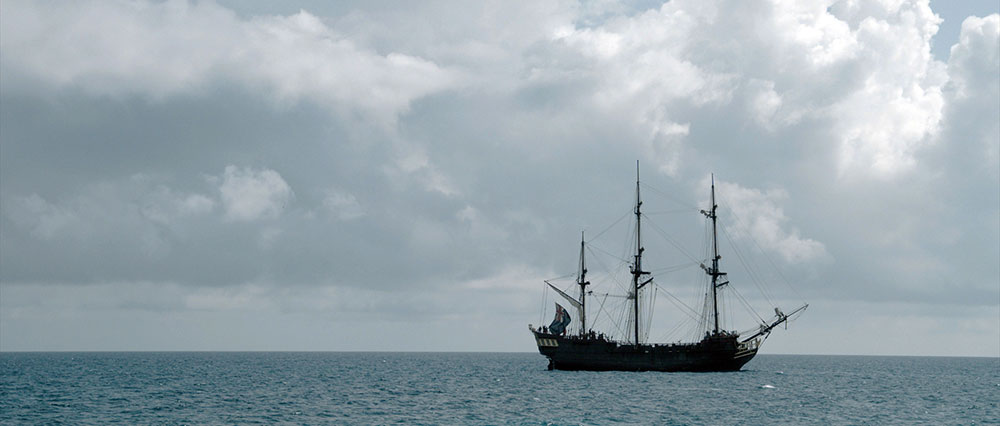
Reference image for the HMS Victory and other ships at Toulon
Paris Riots
A sequence depicting the Paris Riots cover the historical events of the ‘13 Vendémiaire’, the name given to a battle between the French Revolutionary troops and Royalist forces in 1795. This battle was part of the establishment of a new government and, again, proved to be a major factor in the rapid advancement of Bonaparte's career.
BlueBolt’s brief was to extend the environment, replicate and augment the crowd and then send riot-control cannon grapeshot fire into the crowd. All shots were filmed at Greenwich Old Royal Naval College in London, a filming location that the BlueBolt team were familiar with from previous projects. In extending the environment, the challenge was twofold – to design a new look at a familiar location, and to also create a completely new Parisian street look and feel.
French Style
As Henry researched the architecture of Paris, he had the support of the production’s historical advisor Inigo Minns from University of the Arts in London (UAL). One wing of the Louvre Palace in Paris was the key reference for an administrative building in the background behind Napoleon’s soldiers. BlueBolt rebuilt it in 2.5D and gave the Naval College a French style mansard 3D roof top-up. Looking in the other direction, behind the crowd of rioters, the audience sees a digital matte painting based on very rough geometry for scale and perspective, and using additional Louvre references from Inigo.
“The in-house VFX team had done some post-vis on the scene looking back down the street beyond the crowd, and Inigo gave us some annotated drawings on top of their work for more clarity. For the direction facing the Louvre, his work served more as a sign-off on the idea of using that building. So in the end, we had a pretty accurate build of that part of the Louvre,” said Henry.
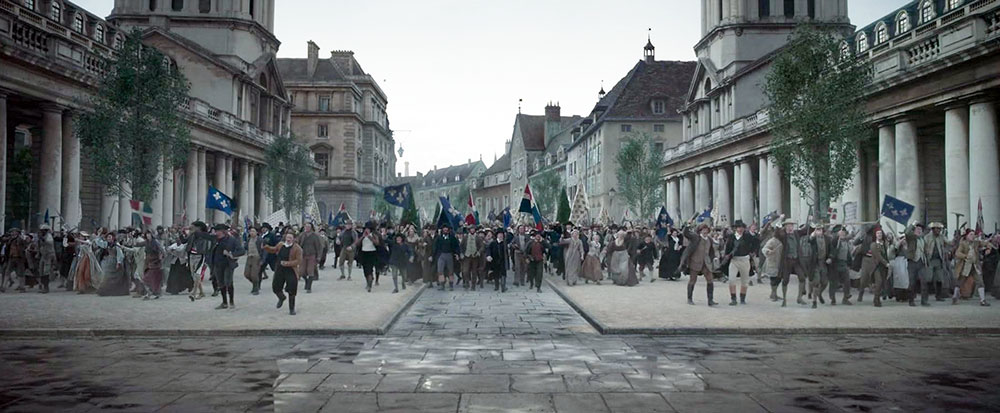
“Our 2.5D approach called for the basic geometry, sometimes becoming quite detailed with column and architrave details present if they were near enough to camera, with the DMP projected onto that.
“The intention was to work sympathetically with the existing architecture – though I’d say that in this context, ‘sympathetic’ is open to debate – which involved adding the French-style first floor and roof to the colonnades of the Naval College. We also found we had more columns going off into the distance than we needed so we lost some to make room for some low-key Paris streets to be visible in the midground, rather than distant background. (Apologies to Christopher Wren!)”
Confrontation
With the stage set, the real story of this sequence is violence, as conveyed by the Royalist crowd and their confrontation with Bonaparte’s troops. For the crowd replication layers, BlueBolt painted out jerk-rig wires from an entire row of crowd actors, individually tracking on blood patches and pulling limbs from victims after the cannon fire.
Gaps among the actors were filled with CG crowd, who could of course withstand more violence. This crowd’s actions were animated with motion capture performed by stunt actors, recorded during a session at the Imaginarium in Ealing Studios. Some of the large flags the crowd on set were waving were replaced by 3D simulations to allow for the violent tearing from the cannon shot.
While crowd replication for the soldiers went together pretty much as planned and worked well in compositing, the Royalists’ crowd was less predictable. “Our overall VFX Supervisor Charley Henley was expecting to need more CG characters receiving damage in the front row than were actually necessary in the end,” Henry said. “As it was, we prepared for that but found that our selection of elements was more than adequate. As we worked it out, we also had to feel our way on where the threshold for the gore level would be – which, as it turns out, was pretty high.”
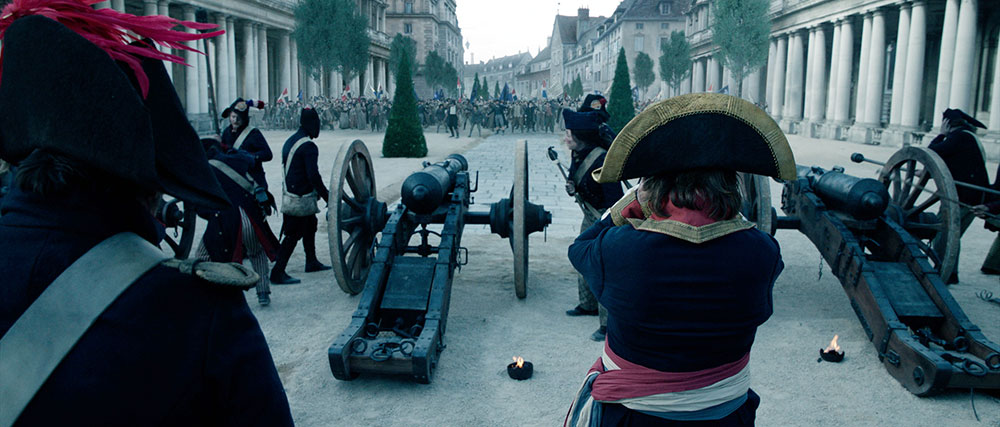
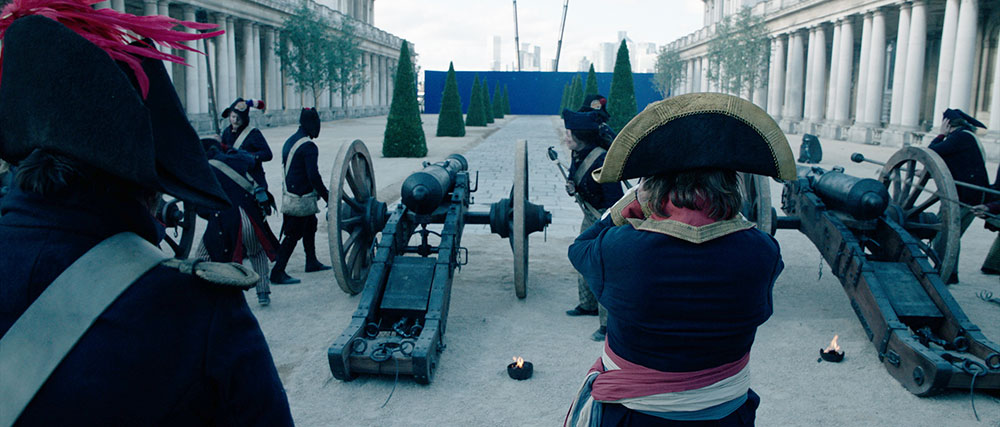
Bloody Finish
The shots were finished with 2D element dressing for cannon fire, smoke, torn fabric floating in the air and two types of blood – a misty blood vapour and a wet blood spray. The crowd are also seen throwing various 3D bottles and stones, all individually hand animated.
Filling in the crowd with so many kinds of elements – 2D and 3D elements, cloth and blood simulations, animated characters, destruction and so on – was a compositing challenge. “To do this systematically starts with getting the numbers right, then the timing, then the details. Because tracking in all the elements and doing the individual limb removals was painstaking, we were very keen to make sure the shot and the timing were approved and locked before we went ahead.”
Looking back at the team’s work on this project, Henry remarked that the film not only features significant VFX set pieces but also integrates subtle VFX throughout the cut. He said, “These small touches collectively contribute to creating the immersive and atmospheric experience of Ridley Scott’s Napoleon and we are proud to have been part of it.” www.blue-bolt.com
Napoleon premiered in cinemas on 22nd November and is available now on Apple TV+.

















